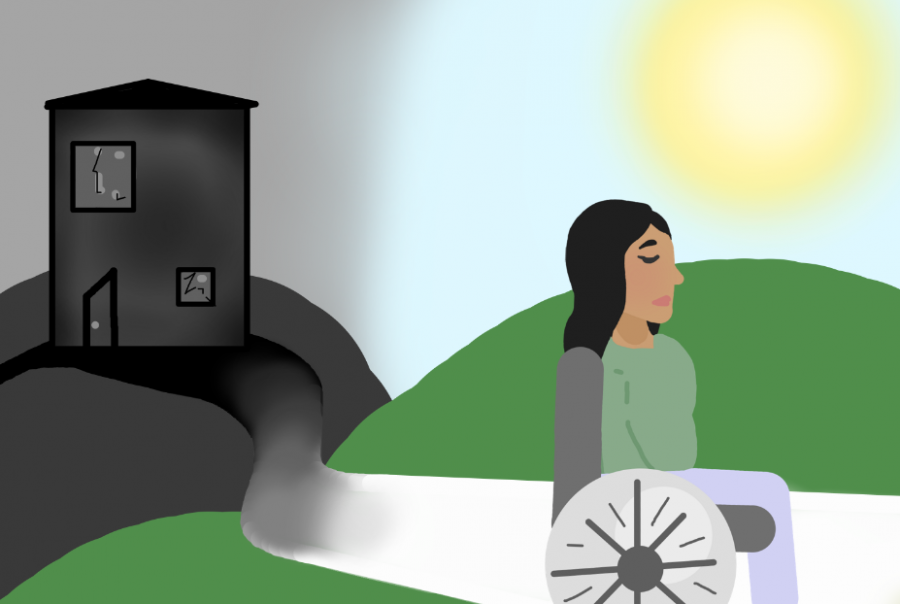Violence against women with disabilities is not romantic, speaker says
Several barriers prevent people with disabilities from seeking assistance
Women with disabilities experience high rates of personal violence, said Stephanie Woodward, a crime victim attorney.
October 19, 2020
The Coalition for Women Students hosted an event featuring Stephanie Woodward to discuss the increased adversity people with disabilities face daily during the pandemic.
Woodward is a crime victim attorney who is passionate about seeking justice for marginalized communities, particularly women and girls with disabilities, said Kaitlin Srader, chair of the Coalition for Women Students.
COVID-19 has made violence against people with disabilities worse, she said. Domestic violence increases during lockdowns and this includes intimate partner violence.
Women with disabilities experience high rates of personal violence, Woodward said.
It is a slap in the face to tell a woman with disabilities that she is brave for living with that disability, Woodward said.
People with disabilities are not thought of as desirable, she said. People do not imagine they get kissed, get married or are sexually active.
“You pray someday someone will find you attractive, and when someone does show interest you stay, even though they beat the hell out of you,” Woodward said. “I know this because I stayed for two years.”
Woodward said she did not speak about her experience with domestic violence until she was 24 years old and decided to share her story in a blog post.
She received many supportive messages and emails from others who have experienced violence, she said. People said they felt like they could have written the blog post themselves.
She also received negativity and skepticism, Woodward said. People said it was not possible for women with disabilities to experience more violence than other groups.
People with disabilities are 40 percent more likely to experience intimate partner violence, she said. The report of abuse is low and many people may feel reliant on their abuser.
“There is an increase in abuse for people with more than one disability or if the person is also in a marginalized group, she said.
If a person with a disability is Black or part of the LGBTQ+ community, they may experience more abuse, Woodward said.
Violence against women with disabilities is romanticized, she said. For example, some headlines about a murder-suicide involving a disabled woman were romanticized in the media.
When a disability is not involved, these crimes are called domestic violence or murder, not romantic, she said. People in the disabled community find this unacceptable, she said. Many have responded to these headlines on Twitter.
Woodward pulled several examples from Twitter, including one from Twitter user Sarah Leaner that read “when you romanticize a man murdering his sick wife, you make misogynistic violence within intimate partner relationships between men and women acceptable.”
Parents have also murdered their children who have disabilities, Woodward said.
“Tracy Latimer was murdered by her father,” Woodward said. “He said he killed her because he loved her and that she was better off this way.
This is not old news, she said. There were two children murdered in 2013 and 2014. The difference between the two was that the murderers of the child who had a disability served three years for manslaughter. The murderer of the child without a documented disability is serving 43 years.
“Think about what that says to disabled people about the value of their lives or how our justice system values us,” Woodward said.
Several barriers prevent people with disabilities from seeking assistance, she said. The first is poverty because disabled people are 2.5 times more likely to live in poverty.
The second is fear, she said. People with disabilities fear further abuse, losing assistance, not being believed or getting in trouble.
The third barrier is accessibility, she said. People with disabilities can have a problem accessing information or pharmaceuticals to manage pain.
The last barrier is communication. ASL interpretation is not widely available and sometimes it is assumed that people who do not speak cannot communicate at all, Woodward said.
Nursing homes are also places of abuse, she said. Many states have completely shut down or severely limited access to the facilities.
Some measures can be taken to change these problems, Woodward said. The language used around people with disabilities can be improved. There should be policies that let family members check on individuals in nursing homes, she said.
Services need to be accessible, she said. District attorneys and law enforcement must be demanded to seek actual justice for women with disabilities.










